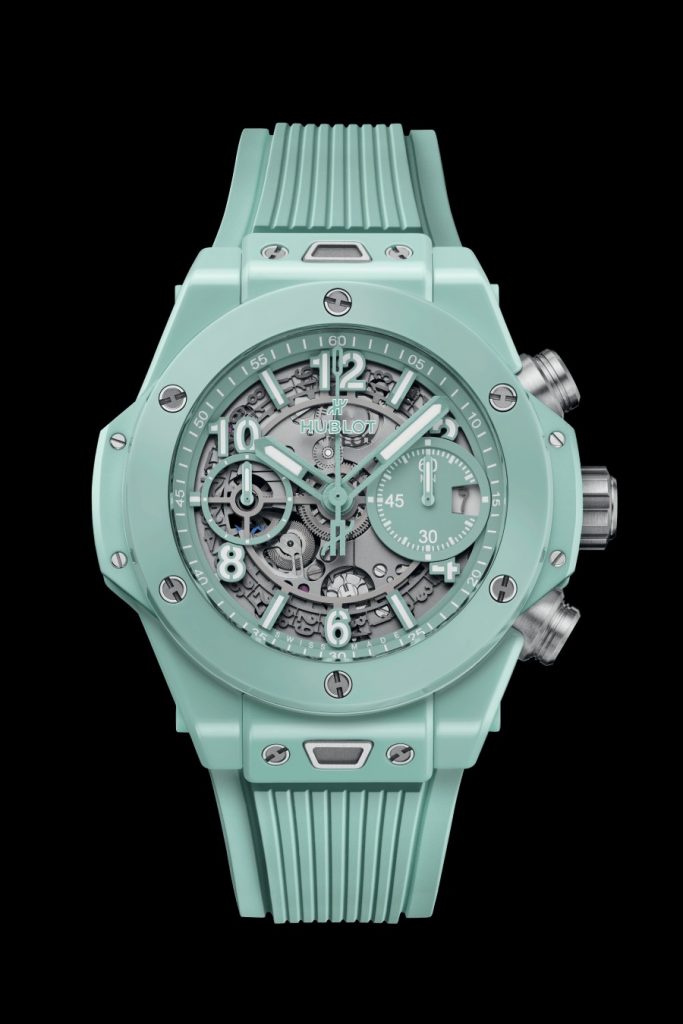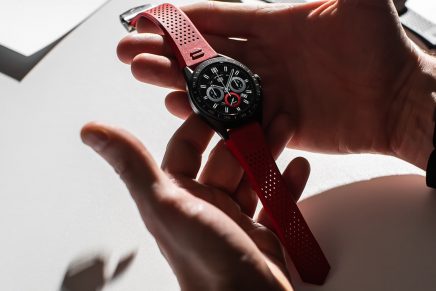The luxury watch industry in 2025 presents a fascinating paradox: a sector deeply revered for its heritage and artisanal craftsmanship is, simultaneously, engaging with cutting-edge technology and artificial intelligence. The latest launches and industry trends reveal not a wholesale abandonment of tradition, but rather a strategic and often subtle integration of tech and AI, aimed at enhancing every facet of the luxury watch experience – from design and manufacturing to personalization and authenticity.
The Unseen Hand: How Tech and AI Are Shaping Luxury Watches in 2025
The notion that the luxury watch industry is “stuck in the past” is increasingly outdated. While the romantic allure of mechanical movements and centuries-old techniques remains central, 2025 unveils a significant, albeit often “quiet,” embrace of technology:
AI-Driven Design and Personalization:
Creative Augmentation: AI is being leveraged to analyze trends, consumer preferences, and historical designs, assisting watchmakers in developing new, unique, and highly desirable models. This includes suggesting intricate patterns, material combinations, and even optimizing ergonomic considerations.
Customization: Brands are exploring AI to enable deeper customization. This goes beyond simple configurators, with AI recommending personalized design elements (dial, strap, finish) based on user data and similar tastes, fostering a stronger emotional connection to the timepiece.
Virtual Try-Ons & Immersive Experiences: Augmented Reality (AR) and Virtual Reality (VR) tools are becoming more prevalent, allowing potential buyers to virtually try on watches, explore them in 3D, and experience brand narratives immersively, bridging the gap between online presence and luxury retail.
Precision Engineering & Manufacturing with AI:
Enhanced Accuracy: AI is integrated into manufacturing processes for unparalleled precision in tasks like engraving, polishing, and component assembly. This ensures higher quality standards and reduces human error in intricate operations.
Efficiency & Productivity: Brands like Seiko and Citizen are reportedly using AI systems to improve manufacturing efficiency and reliability, reducing disruptions and maintaining consistent output quality. This allows artisans to focus on the truly creative and irreplaceable aspects of watchmaking.
Predictive Maintenance: AI-powered systems are being adopted for predictive maintenance of manufacturing equipment, preventing downtime and ensuring continuous, high-quality production.
The Rise of Hybrid and Luxury Smartwatches:
Blending Worlds: The luxury market is seeing a notable surge in hybrid smartwatches that elegantly combine traditional analog aesthetics with discreet smart functionalities. These watches offer the classic appeal of a fine timepiece while integrating health tracking, notifications, and connectivity.
Key Players: Brands like Montblanc (Summit collection), TAG Heuer (Connected Calibre E4), and even high-end offerings from tech giants like Apple (Apple Watch Ultra 2) and Samsung (Galaxy Watch Ultra) are leading this segment. These models prioritize advanced health monitoring (ECG, blood oxygen, sleep tracking) and seamless integration with digital ecosystems.
Targeting New Demographics: This segment is particularly appealing to younger, tech-savvy luxury consumers (Millennials and Gen Z) who value both brand prestige and practical smart features for wellness and daily convenience.
Advanced Materials & Sustainability:
Performance & Aesthetics: Luxury watchmakers are increasingly experimenting with and adopting advanced materials. Forged carbon composites (like Carbonium® and Carbon TPT®), Bulk Metallic Glass (BMG), and new ceramic alloys are being used for their extreme lightness, durability, scratch resistance, and unique aesthetic properties. These materials often stem from military and aerospace research, translating high-performance needs into luxury applications.
Colorful & Unique Ceramics: Innovations in ceramic production are allowing for vibrant colors and intricate finishes, pushing the boundaries of traditional watch aesthetics. Hublot, for example, showcased its mastery of colored ceramic with the Big Bang Unico Mint Green Ceramic.
Eco-Conscious Materials: AI is even assisting in the identification and sourcing of eco-friendly materials, such as recycled metals and lab-grown diamonds, aligning with the growing demand for sustainability in luxury. Brands like Breitling and Cartier are making strides in using recycled materials and renewable energy in production.
Blockchain for Authenticity and Provenance:
The principle of secure, immutable ledgers, similar to those used for sensitive military assets, is critical in the luxury watch market. Blockchain technology is increasingly employed to create digital passports for watches, ensuring transparency in the supply chain, verifying ethical sourcing, and providing irrefutable proof of authenticity to combat counterfeiting.
Despite these technological advancements, the core identity of luxury watchmaking remains deeply anchored in its rich history and artisanal mastery.
Horological Prowess and Complications: The pursuit of mechanical excellence continues unabated. 2025 saw releases emphasizing:
Intricate Movements: Brands like IWC debuted the Portugieser Eternal Calendar, their most complex perpetual calendar to date, accurate for 400 years. Biver unveiled the Carillon Tourbillon Signature Series, featuring a minute repeater, tourbillon, and micro-rotor winding.
New Calibers: Rolex introduced the Land-Dweller, showcasing a new silicon Dynapulse escapement and a new Calibre 7135, demonstrating their continued investment in in-house mechanical innovation.
Hand-Finishing and Savoir-Faire: The meticulous hand-finishing of movements and dials, a hallmark of haute horlogerie, remains paramount, ensuring each timepiece is a unique work of art.
Heritage and Iconic Re-editions:
Celebrating Legacies: Many brands drew inspiration from their archives. Cartier revived the Tank à Guichets from 1928, and Van Cleef & Arpels presented a glittering iteration of their iconic Cadenas timepiece, first introduced in 1935.
Storytelling: Campaigns and collections continue to be deeply rooted in brand history, telling stories of pioneering figures (e.g., Chanel’s inspiration from Gabrielle Chanel and Colette) or historical events (e.g., Tudor’s “Splashdown” documentary about Navy UDT-SEAL frogmen).
Precious Materials and Classic Aesthetics:
While new materials emerge, the timeless appeal of precious metals (gold, platinum) and gem-setting remains a cornerstone of luxury watch design, signifying enduring value and traditional opulence.
Classic Designs: Many new collections continue to favor classic, elegant designs, ensuring longevity and collectibility over fleeting trends. Tudor’s new Black Bay models, for instance, refine existing, popular designs.
The luxury watch industry in 2025 is clearly not stuck in the past but is also not undergoing a complete abandonment of its traditions for tech. Instead, it is navigating a sophisticated path where technology and AI serve as powerful enablers and enhancements, allowing brands to:
Elevate Craftsmanship: AI and advanced manufacturing ensure unprecedented precision, allowing artisans to push creative boundaries and focus on the human touch in intricate details.
Deepen Customer Engagement: Tech provides new avenues for personalization, immersive experiences, and direct communication, catering to a younger, digitally native luxury consumer.
Ensure Authenticity and Sustainability: Blockchain and advanced material science address modern consumer demands for transparency and ethical production.
Diversify Product Offerings: The rise of luxury smartwatches and hybrids allows brands to capture new market segments without diluting the prestige of their traditional mechanical masterpieces.
Ultimately, the luxury watch industry is demonstrating a remarkable ability to balance its rich heritage with forward-thinking innovation. Technology is being woven into the fabric of luxury horology, making it more precise, more personalized, and more relevant for the future, while ensuring that the essence of timeless craftsmanship continues to tick at its heart.







